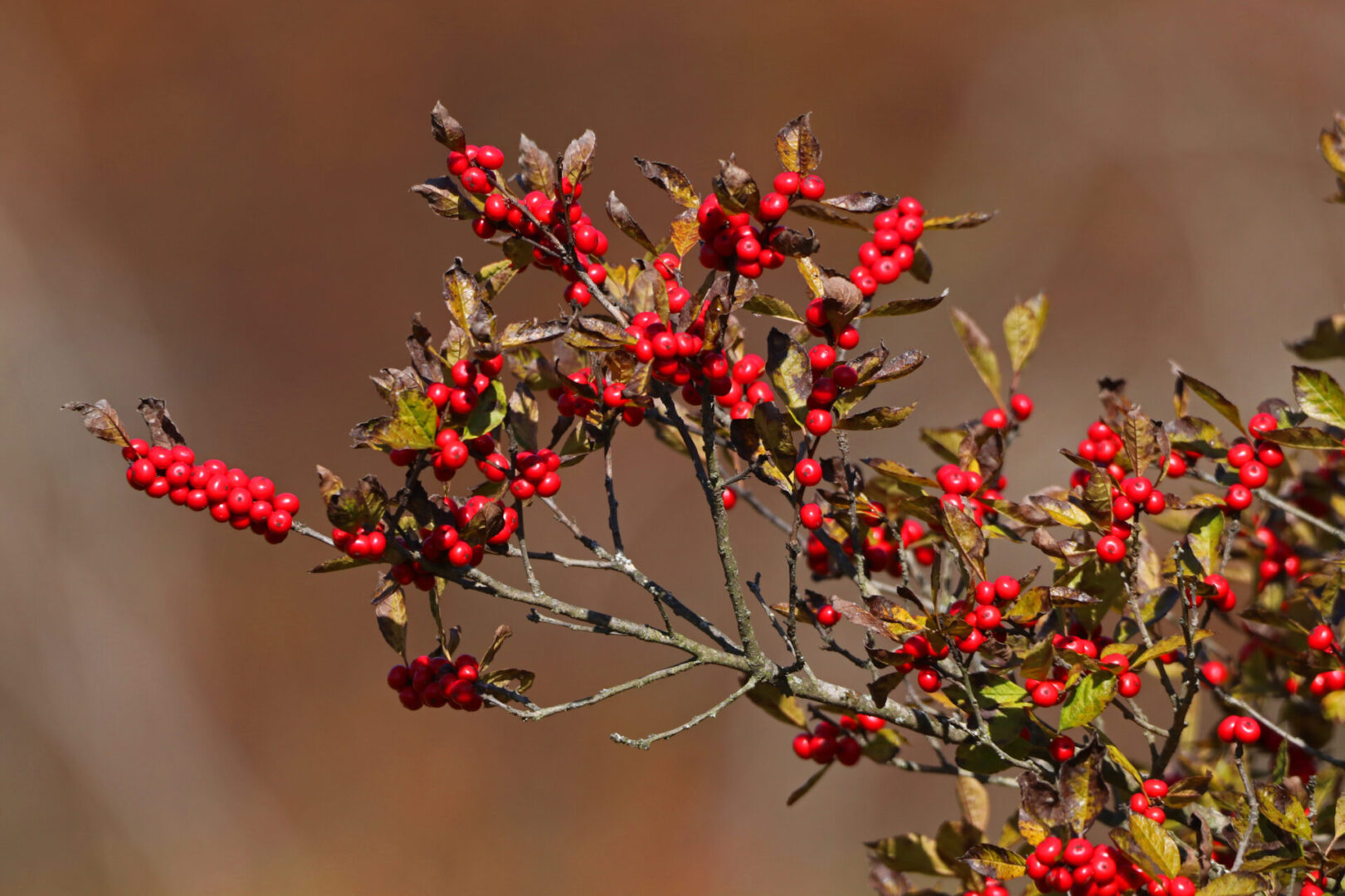
Common winterberry holly is a medium-sized shrub that can grow up to 25 feet tall, but heights of 3 to 10 feet are more common in Pennsylvania. Photo by Mark Nale | For The Gazette

Common winterberry holly is a medium-sized shrub that can grow up to 25 feet tall, but heights of 3 to 10 feet are more common in Pennsylvania. Photo by Mark Nale | For The Gazette
Few autumn sights are more striking than the early morning sun illuminating the scarlet berries and golden foliage of winterberry holly.
Almost everyone knows the American holly that is used for holiday decorations, but few are familiar with the more common Pennsylvania hollies. In addition to American holly (Ilex opaca), several other species of this genus can be found in central Pennsylvania.
They include mountain winterberry (I. montana), a small understory tree of higher altitudes; smooth winterberry (I. laevigata), a wetland shrub more likely found in eastern Pennsylvania; and common winterberry (I. verticillata), another wetland shrub with a more statewide distribution. These three latter holly species are all deciduous — losing their leaves by mid-November.
Common winterberry holly is a medium-sized shrub that can grow up to 25 feet tall, but heights of 3 to 10 feet are more common in Pennsylvania. It can be found in and near wetlands, growing in association with shagbark hickory, hawthorns, blackhaw, swamp rose, silky dogwood and spicebush. It prefers a full to mostly sunny location and acidic soil.
Simple leaves are two to four inches long and elliptical, with a saw-toothed edge and pointed tip. They are arranged alternately on the erect stems. Veins are clearly visible on the leaf’s upper surface and divide the leaf surface into smaller pillowed segments. The leaves usually turn yellow in the fall.
Common winterberry, like our other two deciduous species, has the familiar bright red berries attached closely to its stems, and these fruits are by far the easiest way to identify the group.
Sometimes the berries are so profuse that the entire shrub is a mass of red.
Sprigs of berries are used by some to accent dried flower arrangements; however, their attractiveness is short-lived once taken indoors. Common winterberry’s many red berries make it a beautiful late fall and winter accent shrub.
All hollies flower in the spring. Each shrub is single-sexed, producing either male or female flowers. These small white flowers are preferred by bees.
Producing berries requires both sexes, but the berries only occur on female plants. Maximum fertilization occurs when male and female shrubs are growing within 100 feet of each other.
Individual fruits of common winterberry are about 1/3-inch in diameter, bright red and decorated with one black dot. The berries have very short stalks and appear to be attached directly to the stem. Each fruit is fleshy and contains a number of small, smooth, flattened seeds.
Berries are eaten by mammals and birds, including cedar waxwings, grouse and turkeys. Winterberry holly berries are not a preferred food, but they usually get eaten later in the winter. The berries and leaves are slightly poisonous to humans if ingested. They are not poisonous to touch.
Winterberry holly is sold by several local and online nurseries. It grows naturally from Maine to Georgia.
This column appeared in the Nov. 17-23, 2022 edition of The Centre County Gazette.
Receive all the latest news and events right to your inbox.

80% of consumers turn to directories with reviews to find a local business.